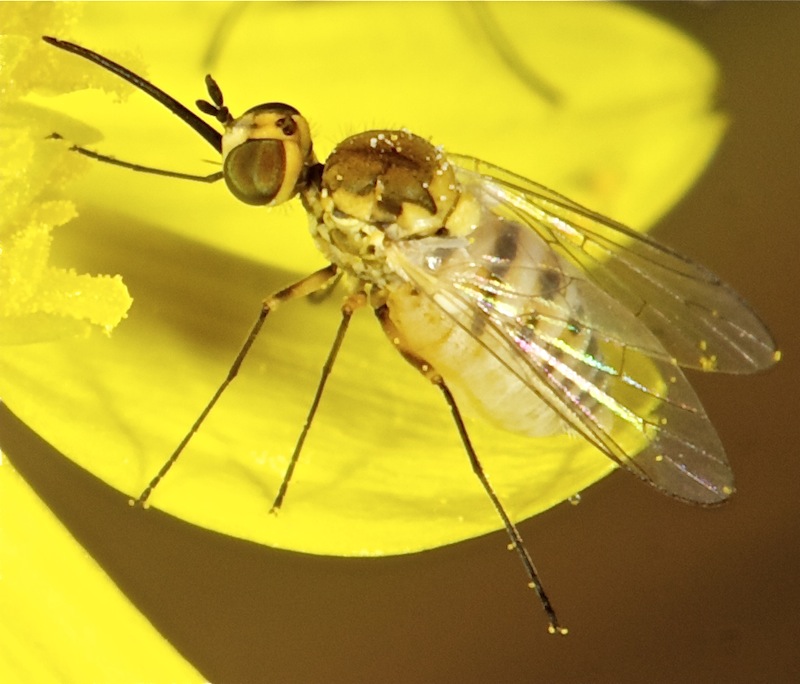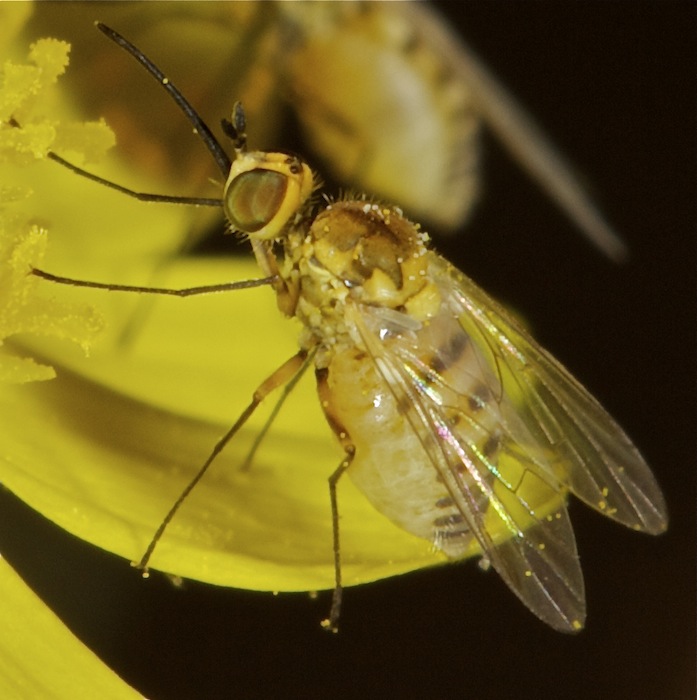ExFmem wrote:Unidentified Mythicomyiid
Family: Mythicomyiidae
Because of their extremely small size and curious body shapes, some genera have been at times placed in Acroceridae or Empididae. Originally, taxa were placed in the subfamily Mythicomyiinae in the Empididae. Then later they were transferred to the Bombyliidae, where mythicomyiids have long been treated. Zaitzev (1991) was the first to give characters warranting raising the group to family level. Subsequent workers have followed Zaitzev's lead and treat the group as a separate family.
The family is separated from the Bombyliidae by the unbranched wing vein R4+5 (branched in Bombyliidae), the extremely reduced or absent maxillary palpi (present in Bombyliidae), wings held together over the abdomen at rest (held at an angle in Bombyliidae), and the abdominal spiracles being placed in the terga (placed in the pleural membrane in Bombyliidae). Augmenting the morphological characters, it is also a much older lineage than any known Bombyliidae, dating from as far back as the Middle Jurassic, with other genera known from the Cretaceous. Bombyliidae, on the other hand are not known from any older fossil material than Eocene Baltic amber deposits.
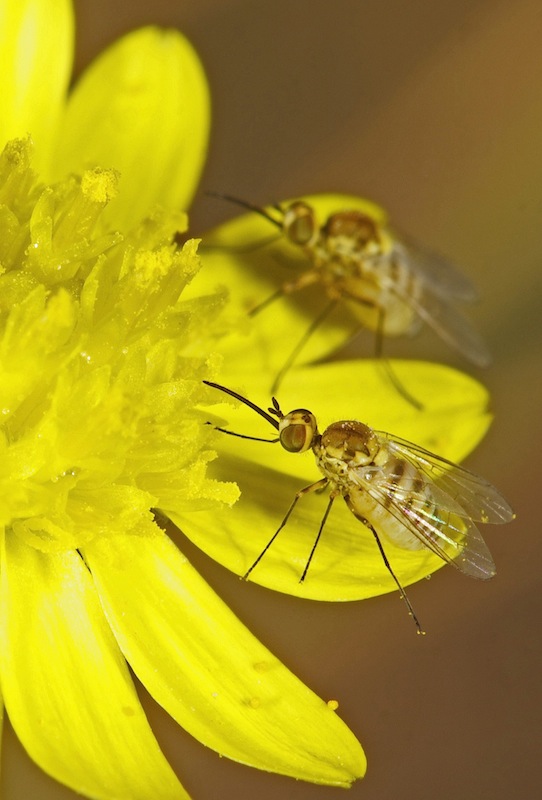
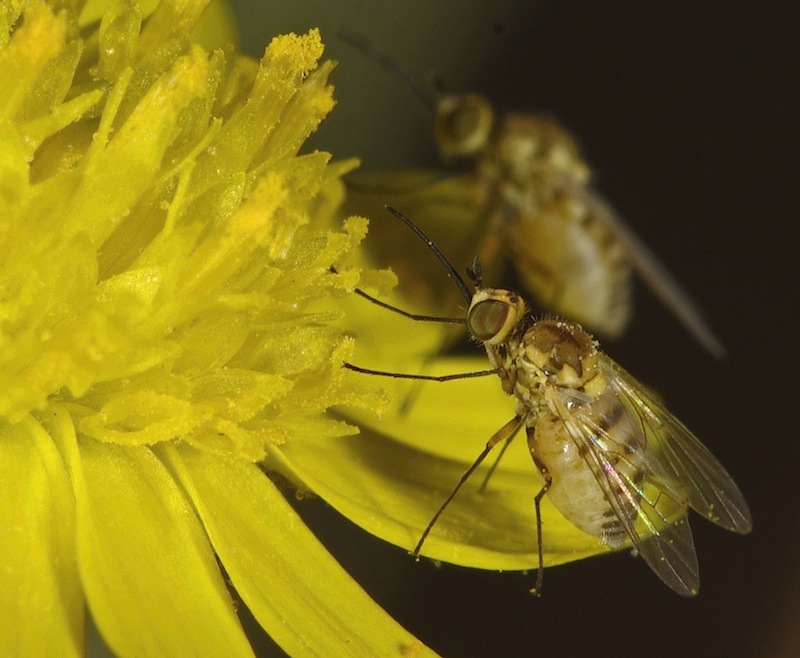
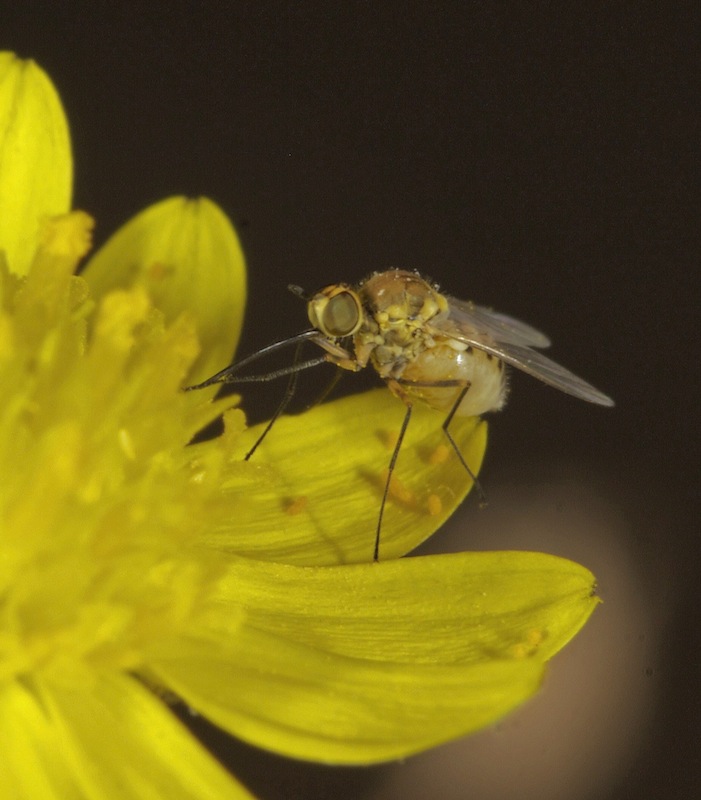
KTP
General Description
Mythicomyiids are very tiny flies (0.5–5.0 mm) found throughout most parts of the world, especially desert and semi-desert regions, except the highest altitudes and latitudes. Many have humpbacked thoraces and lack the dense vestiture common in Bombyliidae. Mythicomyiids have, until recently, not had much attention in the literature. Their small size has caused them to be missed when collecting.
Afrotropical Distribution
A high amount of diversity of both genera and species exists for this family in Africa, especially northern and southern portions. There are 5 Subfamilies with 14 genera and 55 species found in the Afrotropical Region
Psiloderoidinae
Platypyginae
Glabellulinae
Empidideicinae
Leylaiyinae
Biology
Not much is known of the biologies of the immature stages of mythicomyiids. Host data and potential or presumed hosts are known for only 6 species of mythicomyiids. Members of the genera
Psiloderoides and
Gubba, have been reared from grasshopper egg pods in South Africa and Australia respectively;
Glabellula arctica has been observed in nests of Formica sp.; a pupa of
Glabellula crassicornis was found in a dead locust tree among the frass of an unknown insect and successfully reared to the adult stage;
Mythicomyia pusilla has been recorded as a parasite of
Anthophora bee larvae; and an immature of
Mythicomyia pruinosa was found in an ant midden located beneath a rock. Only one additional record has been found in the over 6,000 specimens examined during this study: a single specimen of
Glabellula palaestinensis was found in the stem of Sorghum, which was infested with the larvae of the moth
Sesamis in Egypt.
http://hbs.bishopmuseum.org/pubs-online/pdf/be10.pdf
http://www.researchgate.net/publication ... from_Egypt 








